Imagine stepping into your cozy garden, the air filled with the sweet scent of ripening fruit and the promise of delicious harvests. Whether you’re just getting your hands dirty for the first time or you’ve been nurturing plants for years, “Best Fruits to Grow in Small Gardens” is your essential guide to cultivating a bountiful garden, no matter the size of your space.
For both novices and seasoned green thumbs, the art of gardening offers unmatched joy and satisfaction. This guide provides a carefully curated list of fruit varieties that thrive in small spaces, ensuring that every gardener can experience the delight of plucking fresh, sun-kissed produce right from their own backyard.
Dive into the practical benefits that come with growing your own fruit—healthier eating, cost savings, and a reduced carbon footprint. With our expert tips and techniques, you’ll feel confident in transforming your small garden into a fruitful oasis, teeming with vibrant flavors and colors that celebrate the magic of nature.
Compact Dwarf Apple Trees (Space-Saving Varieties)
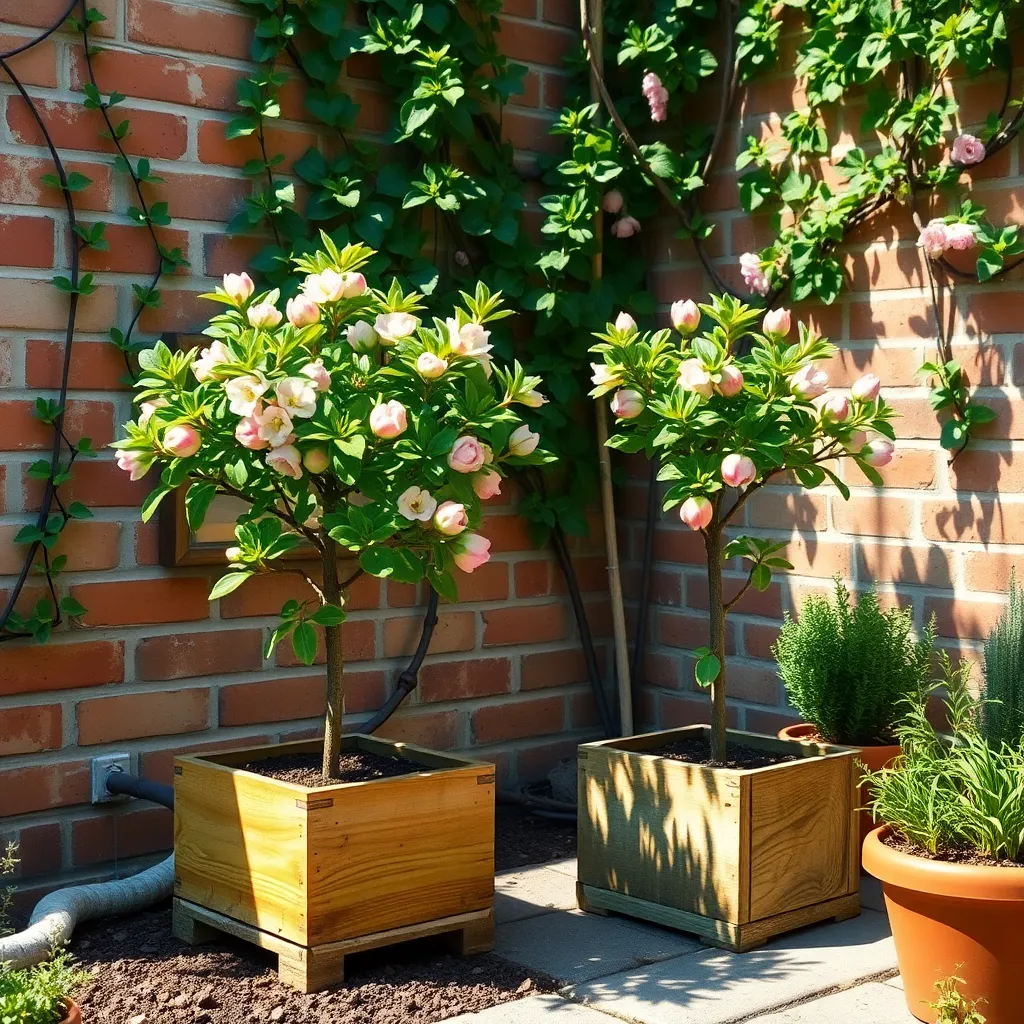
Compact dwarf apple trees are an excellent choice for gardeners with limited space, offering the same delicious fruit as their larger counterparts. Typically growing to a height of 6 to 10 feet, these trees are perfect for small gardens or even container growing.
When planting dwarf apple trees, choose a spot with full sun exposure to ensure optimal fruit production. Ensure the soil is well-draining and rich in organic matter, as this will support the tree’s growth and fruiting capacity.
Water your dwarf apple tree consistently, aiming for about an inch of water per week, especially during dry periods. Mulching around the base can help retain moisture and suppress weeds, benefiting the tree’s health.
For those looking to maximize their harvest, consider planting two different dwarf apple varieties to ensure good cross-pollination. Regular pruning is essential for maintaining tree shape and promoting air circulation, which helps prevent diseases.
Columnar Fruit Trees (Vertical Growth for Tight Spaces)
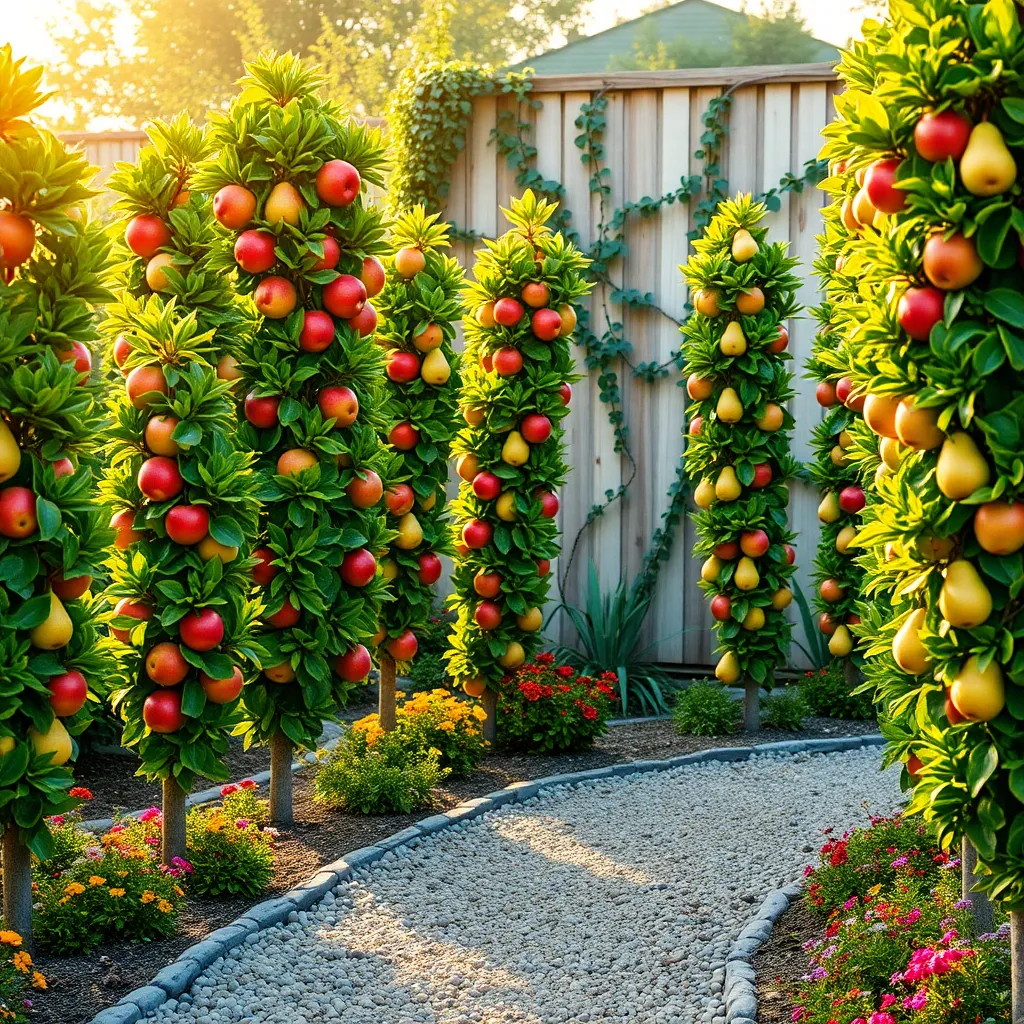
For gardeners with limited space, columnar fruit trees offer a fantastic solution with their vertical growth habit. These trees, ideal for patios and small gardens, grow upwards rather than outwards, making them perfect for tight spaces.
Columnar apple and pear trees are particularly popular due to their ease of maintenance and productivity. Plant them in a large container with well-draining soil, such as a mix of potting soil and perlite, to ensure they thrive.
Water regularly, keeping the soil consistently moist but not waterlogged. In the growing season, apply a balanced, slow-release fertilizer to support healthy growth and fruit production.
Pruning is minimal with columnar trees, limited to removing any dead or damaged branches. To maximize fruit production, consider hand-pollinating flowers if natural pollinators are scarce in your area.
Berry Bushes in Containers (Portable and Productive)
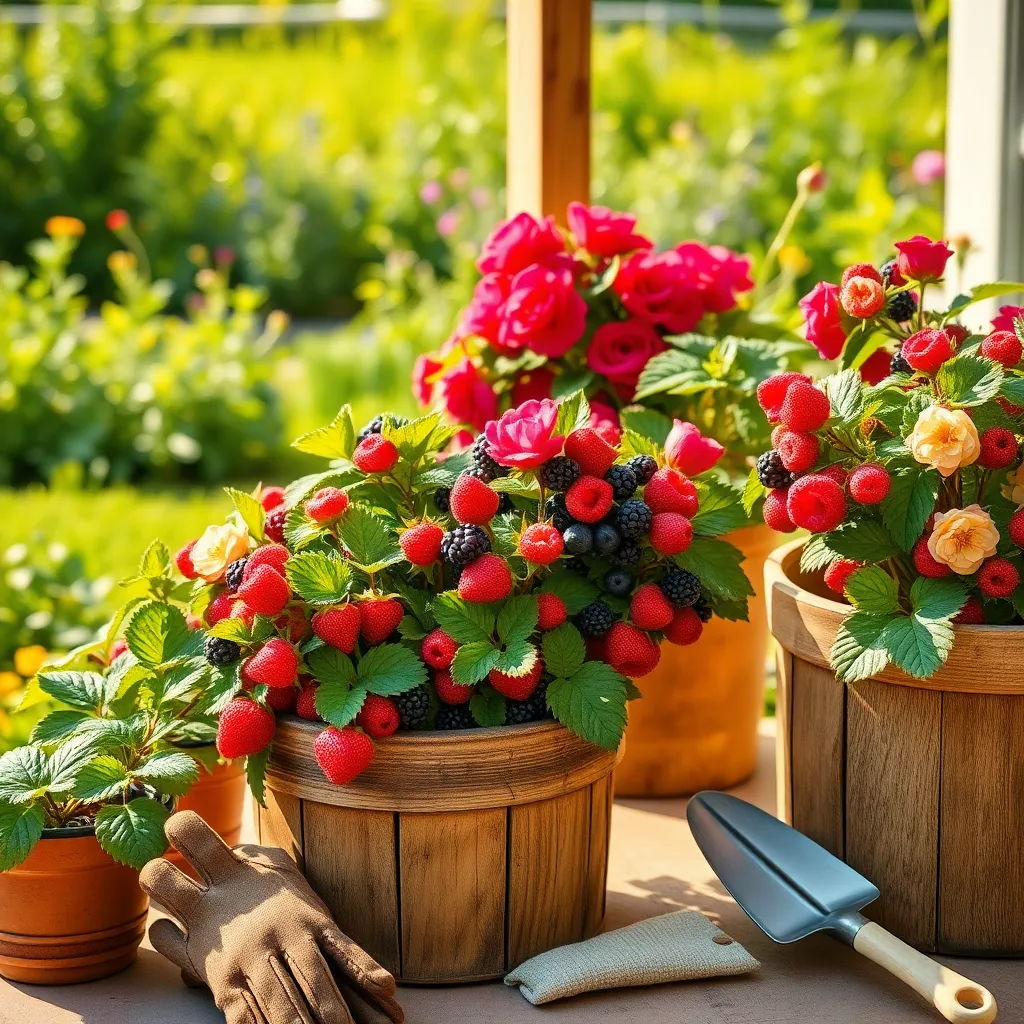
Growing berry bushes in containers is an excellent way to enjoy fresh fruit even in small spaces. Blueberries, raspberries, and strawberries are particularly well-suited for container gardening due to their compact growth habits.
To ensure success, choose containers that are at least 18 inches wide and deep to allow ample root growth. Use a high-quality, well-draining potting mix, ideally one enriched with organic matter to support healthy plant development.
Berries generally require full sun, so position your containers in a spot that receives at least six hours of direct sunlight daily. Regular watering is crucial; ensure the soil remains consistently moist but not waterlogged, especially during fruiting periods.
For those looking to maximize productivity, consider implementing a feeding schedule using a balanced, slow-release fertilizer formulated for fruiting plants. Prune your berry bushes annually to maintain their shape and encourage vigorous new growth, which can lead to a more abundant harvest.
Espalier Techniques for Fruit Trees (Flat Against Walls)
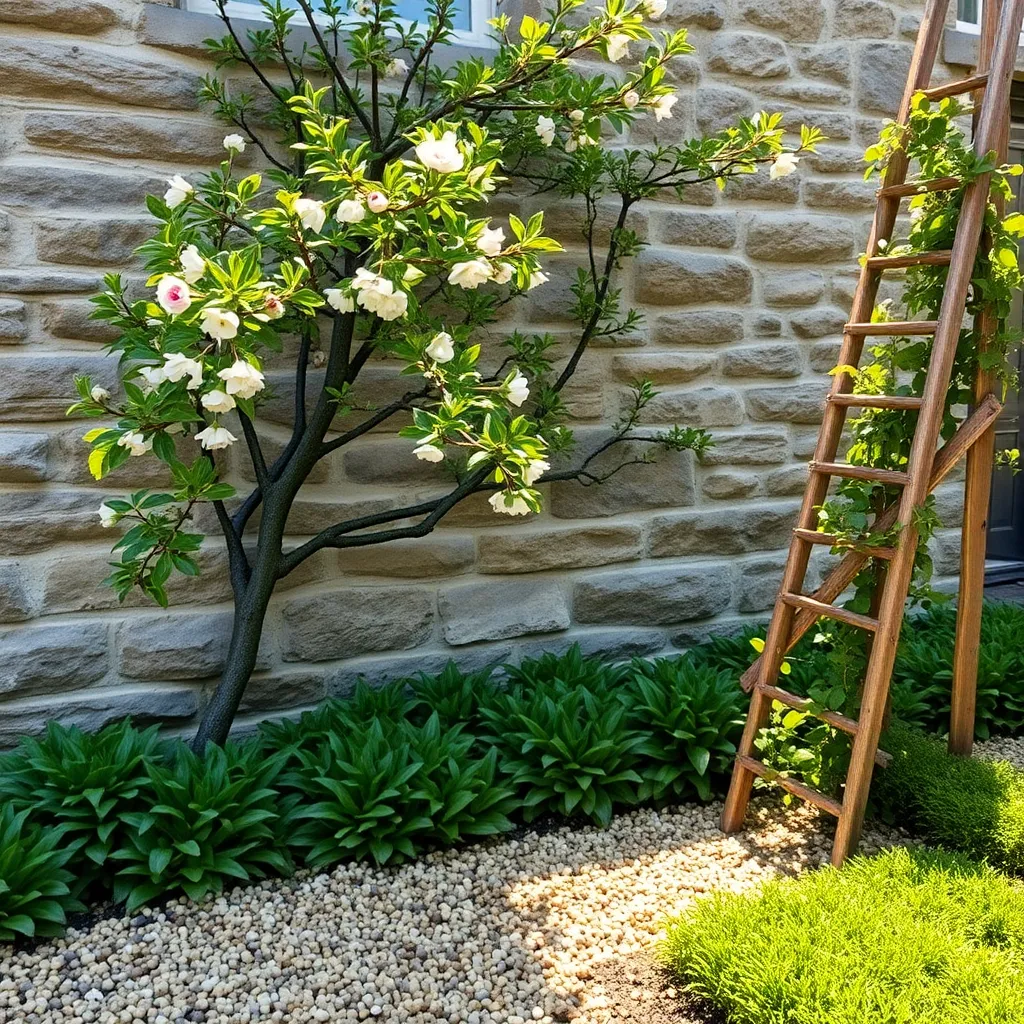
Espalier techniques are an excellent way to grow fruit trees in small gardens, as they allow trees to be trained flat against walls or fences. This method not only saves space but also enhances the aesthetic appeal of your garden.
To get started with espalier, choose a young fruit tree such as apple or pear, as they are the most adaptable to this form. Ensure the wall or support structure receives at least six to eight hours of sunlight daily for optimal growth.
Begin by planting your tree about 15 cm (6 inches) from the wall, taking care to select a well-draining soil enriched with organic matter. Regularly prune the branches to maintain the desired shape, which can range from simple horizontal tiers to more complex patterns.
Water your espaliered tree deeply once a week, especially during dry spells, to encourage deep root growth. Fertilize in early spring with a balanced fertilizer to support healthy development and fruit production.
Advanced gardeners might consider integrating a drip irrigation system to ensure consistent moisture levels. This technique not only saves time but also optimizes water usage, making it an eco-friendly choice for maintaining your espaliered trees.
Strawberry Pots (Maximize Yield with Minimal Space)
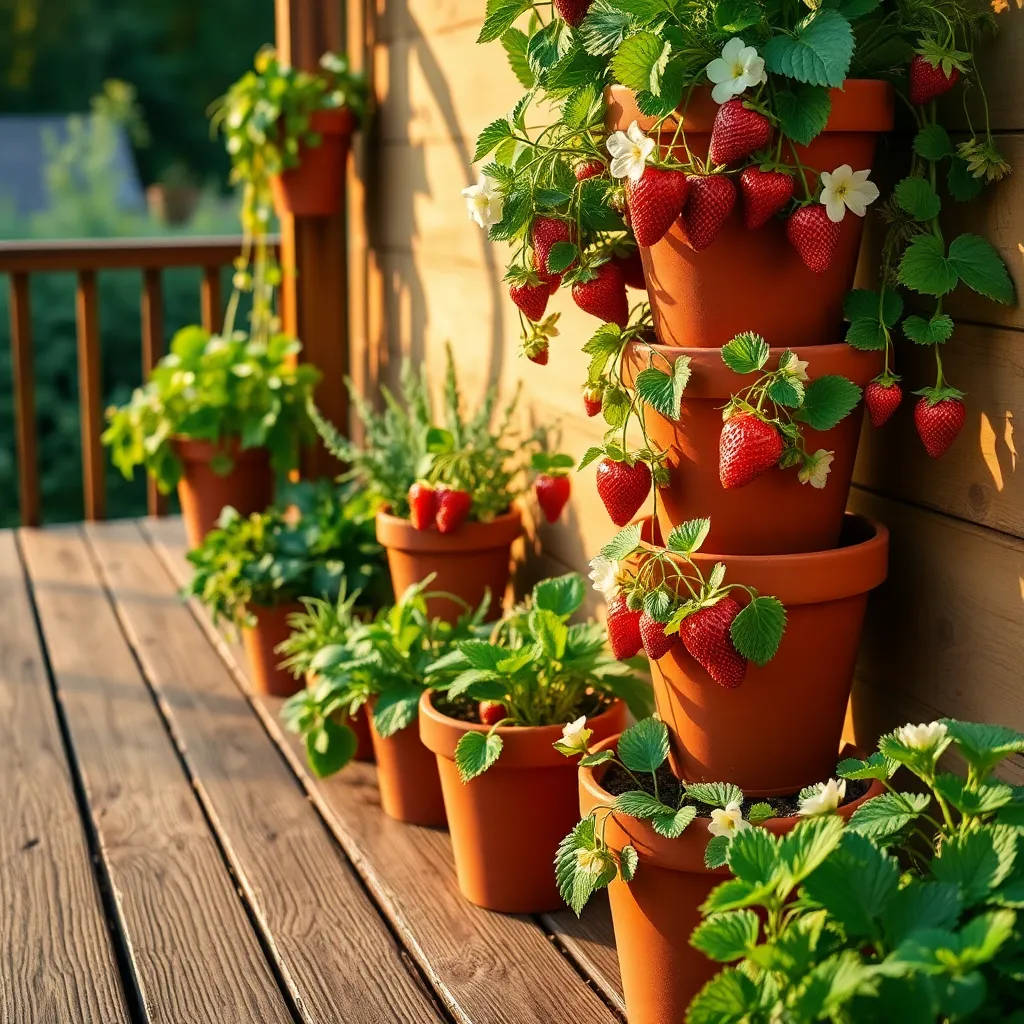
Strawberry pots are an excellent way to grow strawberries in limited spaces, making them ideal for patios, balconies, and small gardens. These pots are designed with multiple openings on the sides, allowing you to plant several strawberry plants vertically and maximize your yield.
To begin, select a high-quality potting mix rich in organic matter, as strawberries thrive in well-draining, nutrient-rich soil. Mix in some slow-release fertilizer to provide a steady supply of nutrients throughout the growing season, enhancing berry production.
Watering is crucial for maintaining healthy strawberry plants in pots. It’s important to keep the soil consistently moist but not waterlogged, so consider using a drip irrigation system or self-watering pots to ensure even soil moisture.
Place the strawberry pot in a location that receives at least six to eight hours of sunlight daily, as adequate sunlight is essential for fruit development. Rotate the pot regularly to ensure that all plants receive equal sunlight exposure, promoting uniform growth and fruiting.
Conclusion: Growing Success with These Plants
In exploring the ‘Best Fruits to Grow in Small Gardens,’ we uncovered five key elements that foster fruitful relationships: intentional nurturing like strawberries, resilience akin to blueberries, adaptability similar to dwarf citrus trees, the sweetness of shared moments as with raspberries, and the patience required for successful growth, much like apple trees. These principles remind us that cultivating meaningful connections requires dedication, flexibility, and a touch of sweetness, all within the space we have.
As a next step, consider a small yet impactful gesture for your loved ones today—perhaps a note of appreciation or a shared activity that brings joy, much like planting a seed in fertile soil. This simple act can nurture your bond, echoing the care you put into your garden.
To continue growing your relationship skills, bookmark this article for quick access to these insights. By doing so, you ensure that these principles are always at your fingertips, ready to inspire your journey toward relational success.
Embrace the possibilities ahead, knowing that with each intentional action, you are laying the groundwork for a thriving relationship garden. Your path to a flourishing partnership is just beginning, and with continued care, your connections will surely blossom.

